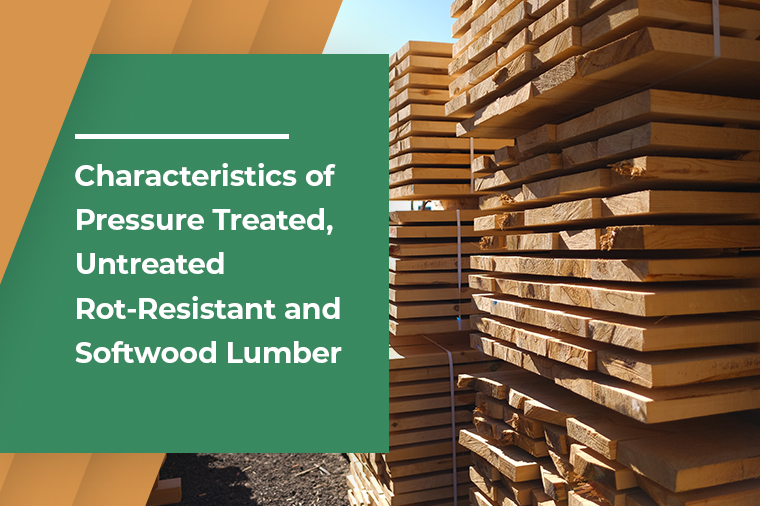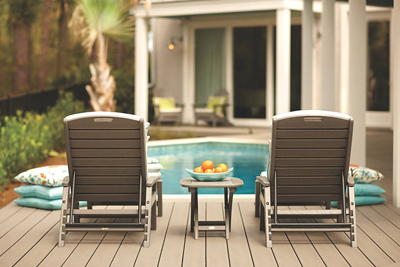Characteristics of Pressure Treated, Untreated Rot-Resistant and Softwood Lumber

To All Our Valued Customers, Over the past few years, the Covid 19 Pandemic has forced us to adapt and change the way we do things on a day-to-day basis. Florida Lumber is no exception. To make sure that we remain strong and competitive in the market for the years to come, Florida Lumber has had to adjust and change our vision for the future. In the last 2 years, we have stopped selling Sheetrock and drywall products, roofing felt and roofing materials, and have even closed on Saturdays.
Over the last few months, we have been transitioning our way out of the door supply business so on August 31, 2022, our door shop will stop assembling doors. We will continue liquidating our doors from inventory until we are out of material.
Some customers have asked if we are closing or even moving locations. To set the story straight, we are not closing or selling the business and we are not moving. These changes are all part of our new vision and path to continue serving South Florida and increasing our footprint in the construction supply industry.
Our focus is going to be on Lumber, Construction Materials, Rebar Fabrication and Rebar Accessories. As we have liquidated some of the items that we don’t sell anymore we have created more space to buy a larger volume of our core items and pass on the savings to our customers.
In the next year you will start seeing changes that will help improve our ability to serve you, our customers. We appreciate your business and your patience as Florida Lumber’s new vision becomes reality.
A Todos Nuestros Valiosos Clientes En los ultimos anos, la pandemia de el Virus (Covid 19) nos ha forzado a adaptarnos y cambiar la forma de hacer cosas en el dia a dia. Florida Lumber no ha sido una excepcion.
Para asegurarnos de mantenernos fuertes y competitivos en el mercado en los anos venideros, Florida Lumber ha tenido que ajustar y cambiar nuestra vision para el futuro. En los dos ultimos anos hemos dejado de vender los productos de yeso (sheetrock), paneles de yeso (drywall), tela asfaltica (roofing felt), materiales de techo y cerramos los Sabados. En los ultimos meses, hemos estado en transicion para salir del negocio de suministro de puertas, en Agosto 31, del 2022 nuestra tienda de puertas dejara de construir y/o cortar puertas. Vamos a continuar liquidando nuestro inventario de puertas haste que terminemos todo el material. Algunos de nuestros clientes han preguntado si estamos cerrando o si nos estamos moviendo a otra localidad. La verdad es que no estamos cerrando, no estamos vendiendo y no estamos cambiando de localidad. Estos cambios son todos parte de nuestra nueva vision y camino a continuar sirviendo al estado sur de la Florida y incrementar nuestras huellas en la industria de suministros de construccion.
paneles de yeso (drywall), tela asfaltica (roofing felt), materiales de techo y cerramos los Sabados.
En los ultimos meses, hemos estado en transicion para salir del negocio de suministro de puertas, en Agosto 31, del 2022 nuestra tienda de puertas dejara de construir y/o cortar puertas.
Vamos a continuar liquidando nuestro inventario de puertas haste que terminemos todo el material. Algunos de nuestros clientes han preguntado si estamos cerrando o si nos estamos moviendo a otra localidad.
La verdad es que no estamos cerrando, no estamos vendiendo y no estamos cambiando de localidad. Estos cambios son todos parte de nuestra nueva vision y camino a continuar sirviendo al estado sur de la Florida y incrementar nuestras huellas en la industria de suministros de construcción.
2431 N.W. 20TH ST.
MIAMI, FL 33142
PHONE: (305) 635-6412
Sales Fax: (305) 633-4054
Accounting Fax: (305) 635-3723
Email: sales@tloridalumber.com

Are you looking forward to undertaking a construction project? Well, the type of lumber you use will determine the outcome. It'll be the difference between the success and failure of your project.
It's therefore important that you choose the right lumber for your construction project. But how do you choose the best? If you’re in a quandary about how to do so, don't worry.
In this article, we'll look at the differences between Pressure-Treated Lumber, Untreated Lumber, Untreated Rot-Resistant Lumber, and Untreated Softwood Lumber. We'll also look at the features that make each the best choice for different types of projects.
In essence, you'll need to use a rot-resistant wood if it will be coming into contact with concrete or the floor. It's all about protecting your investment.
The Features of Pressure-Treated Lumber
Pressure-treated lumber is able to withstand rotting or insect-related damage due to its treatment. It's, therefore, your best option for projects where the wood will have contact with concrete or the ground. If the untreated softwood is used in the process, it will absorb the available water and start to rot.
Untreated softwood lumber is used to make pressure-treated lumber. In this process, the softwood is placed in a vacuum chamber that's full of preservative compounds.
The vacuum helps force these preservatives deep into the wood. However, it's worth noting that the added compound makes this wood heavier than any other form of wood and may be challenging to cut.
It's also more expensive than untreated softwood lumber but cheaper than natural rot-resistant wood.
The Features of Untreated Rot-Resistant Lumber
Some tree species will have natural rot-resistant features. If you have pets, children or animals, this may be your best bet. Remember, as children grow, they tend to try to eat anything they come across. This can be especially dangerous if they eat chemicals present in pressure-treated lumber.
Since they are naturally rot-resistant, they are easier to cut and have lesser weight. These two properties put this species in high demand. In turn, the increase in demand means that they're always more expensive than all other types of woods.
Examples of trees with rot-resistant lumber include redwood, cypress, western cedar, Pacific yew and black locust.
Untreated Softwood Lumber
At times, you may substitute the rot-resistant options with untreated softwood lumber. This is ideal in areas where the wood is expected to come into contact with cement. You must ensure that any protrusion that may be vulnerable to moisture is covered.
If you want to use it for outdoor purposes or want to trim it, it is important to use a good quality paint. An oil-based enamel would be your best bet. In this way, the wood is protected from rotting and other forms of insect damage, at an extra cost.
How to Choose Among the Three
The type of lumber you use should depend on the needs you have. As shown, each of these three types of wood will meet specific needs.
However, the decision on which wood to buy will depend on the overall costs, environmental demands and the need for an earth-friendly material.
Take your time to analyze the options available and settle on the one you feel will best meet your needs and wants.

